Tamil cuisine is a flavorful tapestry woven from centuries of tradition in South India's Tamil Nadu region. Characterized by its robust use of spices like coriander, turmeric, and fenugreek, it offers a rich variety of vegetarian and non-vegetarian dishes. From tangy tamarind-based sambar and crispy dosas to aromatic biryanis and succulent Chettinad curries, each dish reflects the region's vibrant culinary heritage. Staples like rice, lentils, and coconut form the foundation, while intricate cooking techniques and bold flavors create a gastronomic experience that tantalizes the taste buds and celebrates Tamil Nadu's cultural richness.
Ambur Biryani
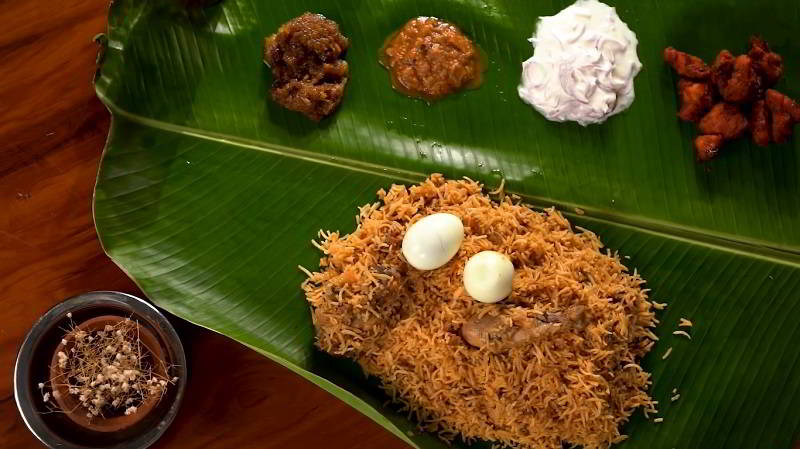
Ambur biryani is a cherished culinary gem originating from the town of Ambur in Tamil Nadu, India. Renowned for its distinctive flavors and aromatic spices, this traditional dish features fragrant Basmati rice cooked with succulent pieces of marinated meat, typically chicken or mutton. What sets Ambur biryani apart is its unique preparation method, which involves marinating the meat in a blend of spices and yogurt before layering it with partially cooked rice and slow-cooking the dish to perfection. The result is a harmonious symphony of flavors and textures, making Ambur biryani a beloved delicacy celebrated for its exquisite taste and cultural significance.
Vada
-1711688888.jpg)
Vada is a popular and delicious dish in Tamil cuisine. It is a savory fried snack that is typically made from a batter consisting of urad dal, also known as black gram lentils. The lentils are soaked, ground into a paste, and then mixed with spices such as ginger, green chilies, and curry leaves to enhance the flavor. Once the batter is ready, small portions are shaped into round flat discs and deep-fried until golden brown and crispy. The result is a crispy exterior with a soft and fluffy interior. Vadas are often served hot and enjoyed as a snack on their own or as a side dish with other South Indian delicacies. Vadas have various variations, including medu vada, which is a larger-sized vada with a hole in the center, and masala vada, which incorporates chopped onions and other spices for an added kick. Vadas can also be enjoyed with chutneys or sambar, a flavorful lentil soup. Tamil cuisine vada is loved for its crispy texture, aromatic spices, and irresistible taste, making it a favorite snack for people of all ages.
Dosa
-1711690079.jpg)
Dosa is a popular dish in Tamil cuisine that is loved by people of all ages. It is a thin, crispy pancake-like crepe made from fermented rice and lentil batter. The preparation of dosa involves soaking rice and lentils overnight, grinding them into a smooth batter, and allowing it to ferment for several hours. This fermentation process gives dosa its distinct tangy flavor and airy texture. Dosa is typically served with a variety of accompaniments, including coconut chutney, sambar (a spicy lentil soup), and tomato chutney. It can also be stuffed with various fillings, such as spiced potatoes, paneer (Indian cottage cheese), or vegetables. The stuffing adds a delicious and savory element to the already flavorful dosa.
Kanji
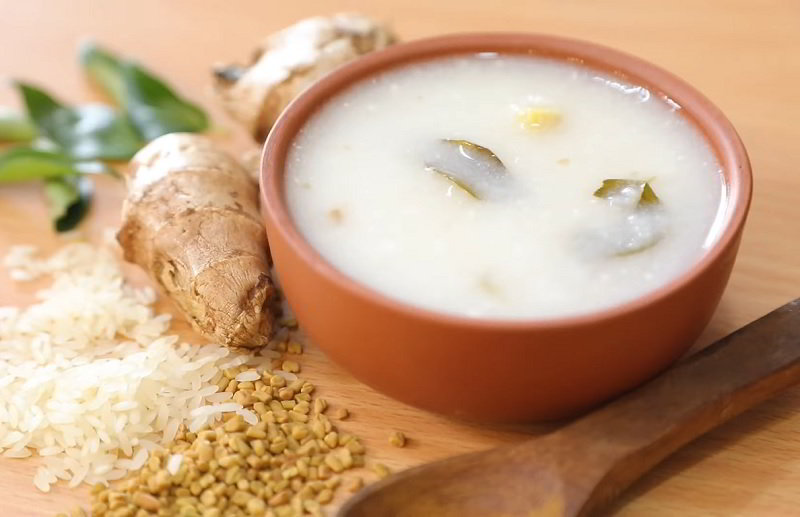
Kanji, a traditional Tamil dish, is a comforting rice porridge enjoyed for its simplicity and nourishing qualities. Made by simmering rice in water until soft and creamy, it's often flavored with aromatic spices like cumin, ginger, and black pepper. Sometimes lentils or vegetables are added for extra texture and nutrition. Kanji is typically served hot and is a popular choice during times of illness or as a light meal, especially for breakfast or dinner. Its soothing warmth and gentle flavors make it a beloved staple in Tamil cuisine, offering both sustenance and comfort to those who enjoy it.
Mulligatawny
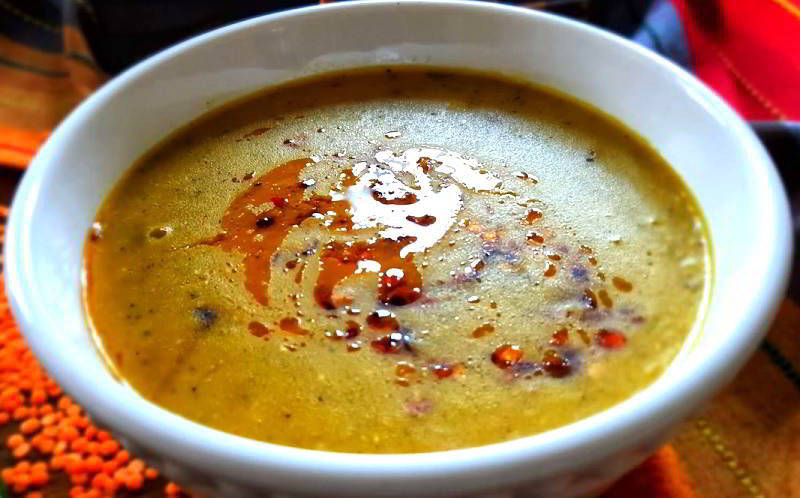
Mulligatawny is a flavorful and aromatic soup that is a delightful blend of Indian and British culinary influences. The name itself is derived from two Tamil words - "milagu" meaning pepper and "thanni" meaning water, highlighting its spicy and watery nature. This hearty dish typically consists of a base made from lentils, vegetables, and a variety of spices such as turmeric, cumin, coriander, and garam masala. The addition of coconut milk provides a rich and creamy texture, balancing the spiciness of the soup. Mulligatawny is often garnished with fresh coriander leaves and served with steamed rice or Indian breads. The flavors of Mulligatawny are complex and diverse, combining the earthiness of lentils with the tanginess of tomatoes and the heat from the spices. It is a versatile dish that can be customized to suit individual preferences, with variations including the addition of chicken, shrimp, or even apples to create a sweet and sour twist.
Idli
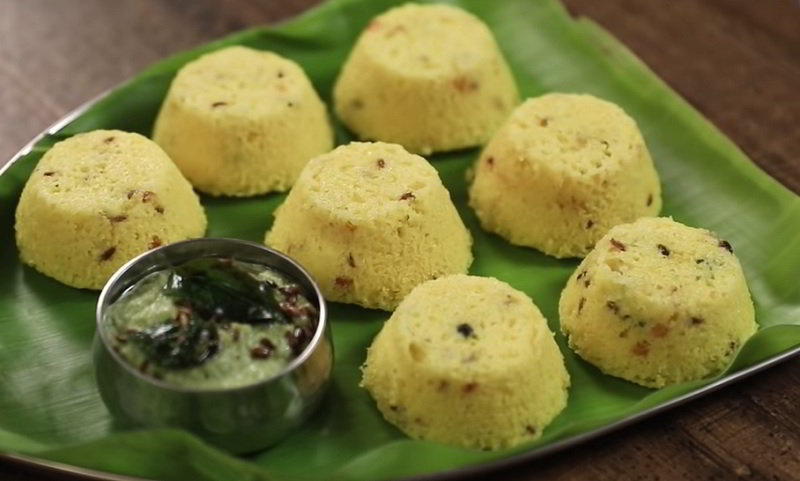
Idli is a popular South Indian dish that is a staple in Tamil cuisine. It is a soft and fluffy steamed rice cake that is made from fermented rice and urad dal (split black gram). Idli is known for its light and healthy nature, making it a perfect breakfast or snack option. The preparation of idli involves soaking the rice and dal separately for a few hours, grinding them into a smooth batter, and allowing it to ferment overnight. The fermented batter is then poured into greased idli molds and steamed until cooked. The end result is a white, spongy idli that is mildly tangy and has a distinct flavor. Idli is typically served with sambar (a lentil-based vegetable stew) and coconut chutney. It can also be enjoyed with other accompaniments like tomato chutney or spicy milagai podi (powder).
Payasam
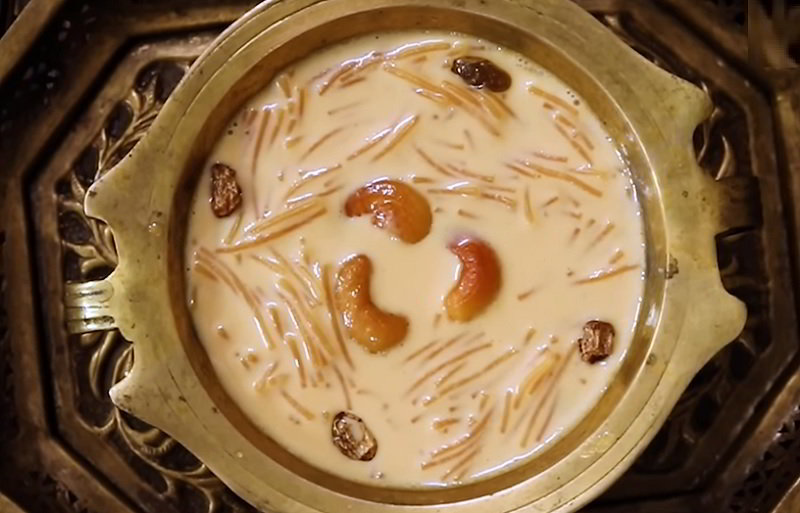
Payasam, a cherished Tamil dessert, is a creamy, sweet pudding made from simmering rice or lentils in milk, sweetened with jaggery or sugar. Infused with fragrant cardamom, saffron, and sometimes garnished with toasted nuts and raisins, it offers a delightful blend of flavors and textures. Payasam is often prepared during festivals, celebrations, and special occasions as a symbol of prosperity and happiness. Each spoonful brings forth a rich, velvety texture and a burst of sweetness, evoking feelings of warmth and contentment.
Puttu
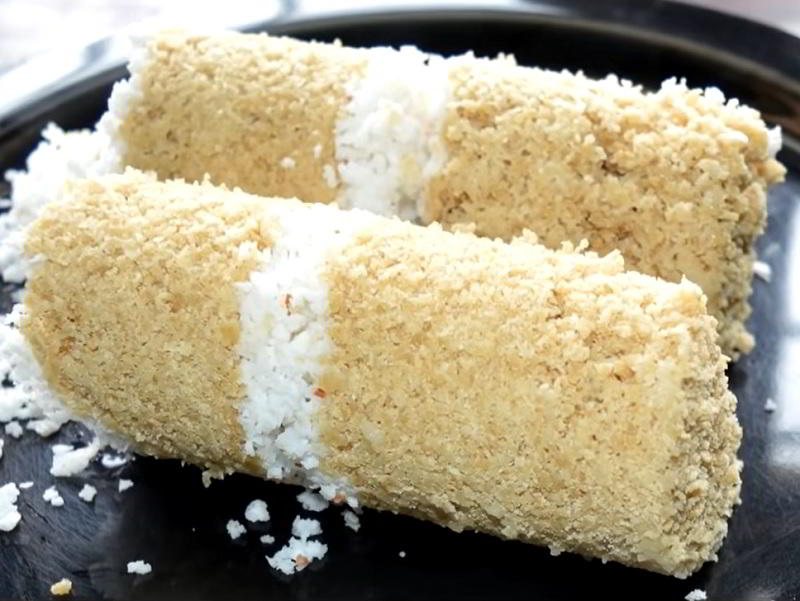
Puttu is a popular dish in Tamil cuisine that is loved for its unique taste and texture. It is a steamed rice cake that is traditionally made using rice flour. The dish is typically enjoyed as a breakfast or evening snack. To prepare puttu, rice flour is mixed with water and salt to form a crumbly consistency. This mixture is then layered with grated coconut in a cylindrical vessel called a puttu kutti. The vessel is placed on top of a steamer, where the puttu is cooked by the steam. The result is a fluffy, soft and moist rice cake with a subtle coconut flavor. Puttu is often served with a variety of accompaniments such as kadala curry (black chickpea curry), papadams, banana slices, or coconut chutney.
Filter Coffee
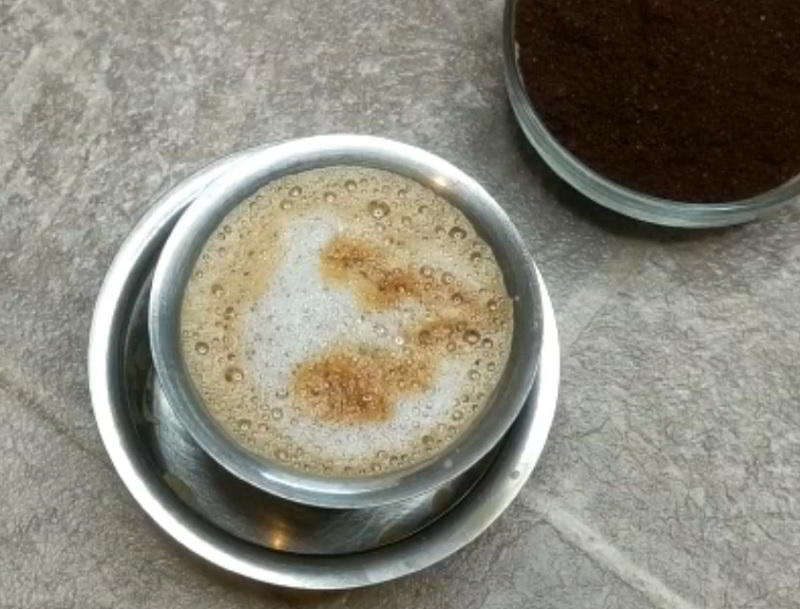
Filter coffee, an integral part of Tamil culture, is a rich and aromatic beverage brewed to perfection. Ground coffee beans, typically a blend of Arabica and Robusta, are placed in a metal filter and hot water is poured over them, allowing the essence to drip slowly into a waiting vessel. The decoction is then mixed with hot, frothy milk and sweetened with sugar to taste. Served in small stainless steel cups, filter coffee boasts a bold flavor with a hint of bitterness, balanced by the creamy texture of milk. It's a beloved ritual, savored throughout the day for its invigorating aroma and comforting warmth.
Idiyappam
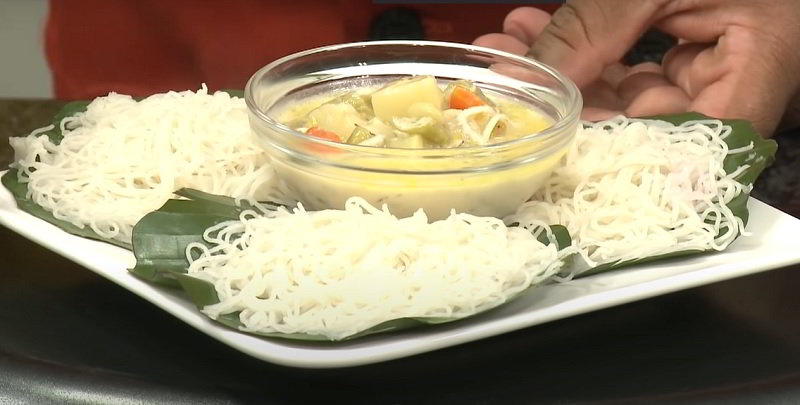
Idiyappam, a traditional Tamil delicacy, is a steamed rice noodle dish known for its delicate texture and subtle flavor. Made from rice flour, water, and sometimes a touch of salt, the dough is shaped into thin strands and steamed in circular or coil shapes. These soft, tender noodles are often served with a variety of accompaniments such as coconut milk, spicy curries, or sweetened coconut and jaggery. Idiyappam's versatility allows it to be enjoyed as a breakfast staple, a light snack, or as part of a festive meal.
Appam
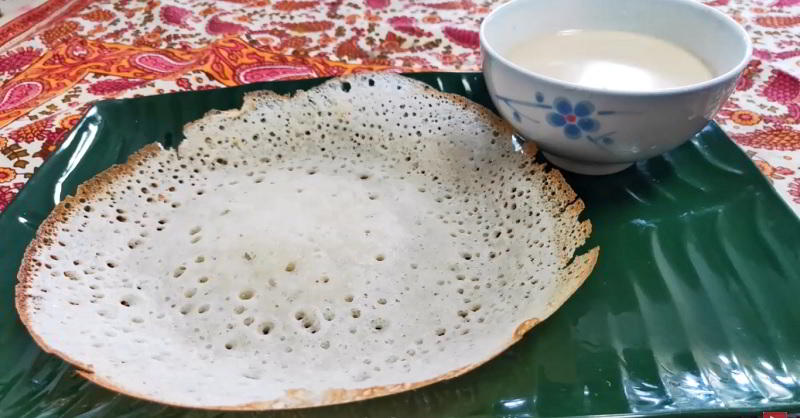
Appam, a beloved Tamil delicacy, is a lacy-edged pancake with a soft, fluffy center. Made from a batter of fermented rice and coconut milk, often with a hint of yeast, it's cooked in a special curved pan. The result is a lightly tangy, slightly sweet pancake with a unique texture perfect for soaking up spicy curries or sweet coconut milk. Appam's versatility allows it to be enjoyed as breakfast, snack, or part of a festive meal. Its delicate flavor and airy texture make it a cherished dish that embodies the essence of Tamil cuisine.
Murukku

Murukku, a beloved South Indian snack originating from Tamil Nadu, is a delightful combination of flavors and textures. This crispy and savory treat is crafted from a mixture of rice flour, urad dal flour, and a medley of aromatic spices such as cumin seeds, sesame seeds, and asafoetida. To create the dough, these ingredients are skillfully blended with water and a touch of butter or oil. Using either a Murukku press or a piping bag equipped with a star-shaped nozzle, the dough is transformed into charming spiral or coil shapes. Once shaped, the Murukku is immersed in hot oil and fried until it achieves a glorious golden brown hue and a satisfying crunch. With its unmistakable texture and delightful consistency, Murukku is not only enjoyed as a tea-time snack but also cherished as a special treat during festivals and other significant occasions.
Sambar
-1711699776.jpg)
Sambar is a popular South Indian dish that holds a special place in Tamil cuisine. It is a flavorful and aromatic lentil-based stew that is made with a variety of vegetables, tamarind pulp, and a unique blend of spices. The dish is typically served with steamed rice, idli, dosa, or vada. To prepare sambar, tuvar dal (pigeon pea lentils) is cooked until soft and mashed. A mixture of vegetables like drumsticks, brinjal, pumpkin, and carrots are added to the dal along with a tangy tamarind pulp. A special sambar powder, made from roasted spices like coriander seeds, cumin seeds, fenugreek seeds, and dried red chilies, is added to the stew to give it a distinct flavor. The dish is then simmered until the flavors meld together, resulting in a rich and hearty stew. The final touch is the tempering of mustard seeds, curry leaves, and dried red chilies in ghee, which is poured over the sambar just before serving. This adds an extra layer of aroma and enhances the overall taste.
Kottu
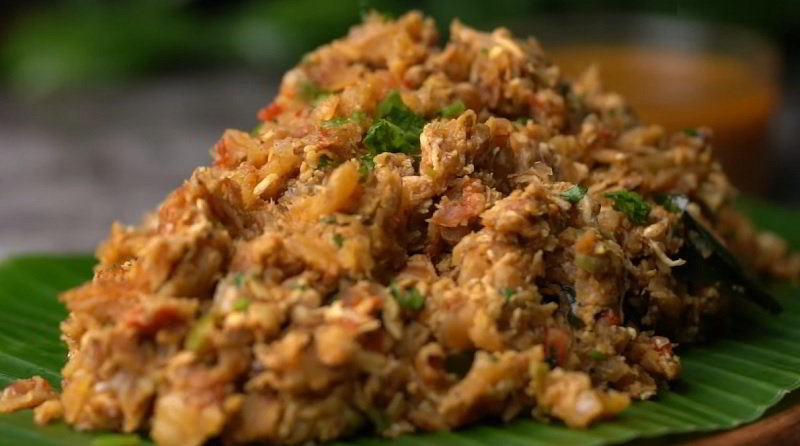
Kottu is a tantalizing dish made from finely chopped roti (flatbread), vegetables, eggs, and a choice of meat or seafood. Cooked on a griddle with an array of aromatic spices, including chili, curry leaves, and onions, it's often accompanied by a side of spicy curry or chutney for an extra kick. The rhythmic chopping sound as the ingredients are mixed together on the hot griddle adds to the allure of this flavorful dish.
Upma
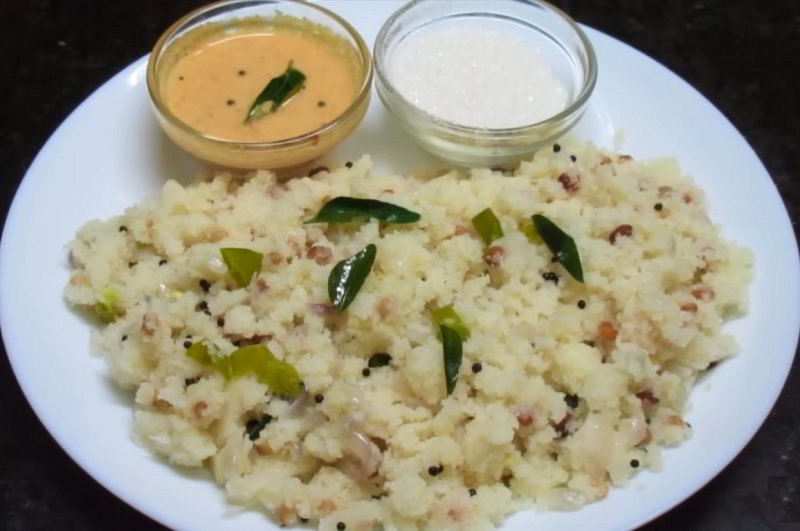
Upma is a traditional Tamil dish that is popularly consumed for breakfast or as a light snack. It is a simple yet flavorful dish made with semolina (or rava), spices, and various vegetables. The dish is known for its unique texture, which is achieved by roasting the semolina before cooking it. To prepare upma, first, the semolina is dry roasted in a pan until it turns golden brown, which enhances its taste and aroma. Then, chopped onions, green chilies, and grated ginger are sautéed in oil or ghee, followed by the addition of vegetables like carrots, peas, and beans. Once the vegetables are cooked, water is added, and the mixture is brought to a boil. The roasted semolina is then added slowly to the boiling mixture while continuously stirring to prevent lumps from forming. The dish is cooked until the semolina is soft and fluffy. Upma is typically seasoned with mustard seeds, curry leaves, and cashew nuts, which are sautéed in oil and added as a garnish. It is commonly served with coconut chutney, sambar, or pickle.
Masala Dosa
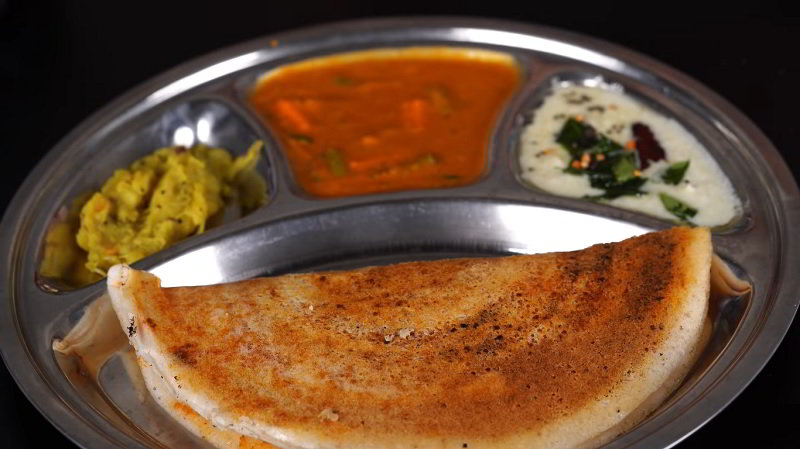
Masala dosa is a crispy and savory pancake made from fermented rice and lentil batter, served with a spicy potato filling and various chutneys. The process of making masala dosa involves soaking rice and lentils, grinding them into a smooth batter, and fermenting it overnight. The batter is then spread thinly on a hot griddle, creating a thin and golden-brown crepe-like base. The dosa is then filled with a flavorful potato masala mixture, which is made by sautéing boiled potatoes with onions, mustard seeds, curry leaves, and a blend of spices. Masala dosa is typically served with a variety of chutneys, including coconut chutney, tomato chutney, and sambar, a lentil-based vegetable stew. The combination of the crispy dosa, spicy potato filling, and tangy chutneys creates a burst of flavors and textures that is loved by many.
Madras Curry
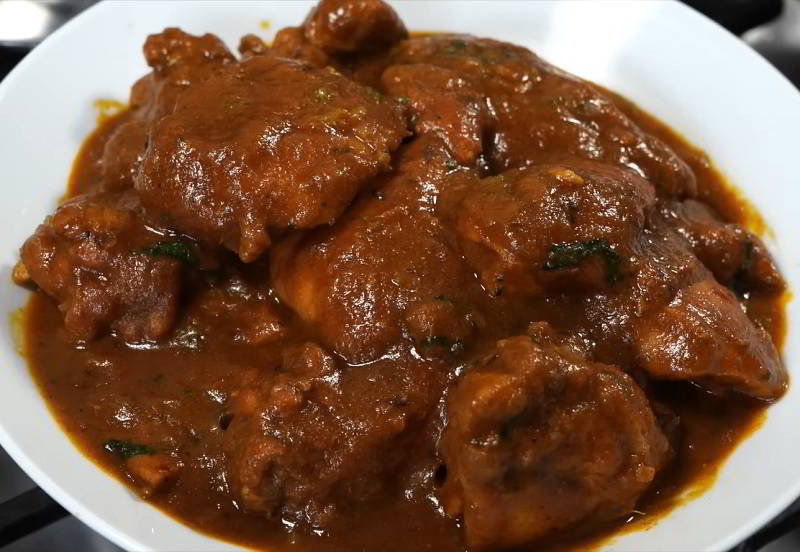
Madras curry, originating from the city of Chennai (formerly known as Madras) in South India, is a robust and aromatic dish renowned for its rich flavors and vibrant spices. It typically features a base of onions, tomatoes, and garlic, simmered with a blend of aromatic spices such as turmeric, cumin, coriander, and chili powder. The dish may include a variety of protein options like chicken, lamb, or vegetables, cooked in a luscious coconut milk or yogurt-based sauce. Madras curry strikes a perfect balance between heat and depth of flavor, offering a tantalizing taste of South Indian culinary tradition in every bite.
Bhaji
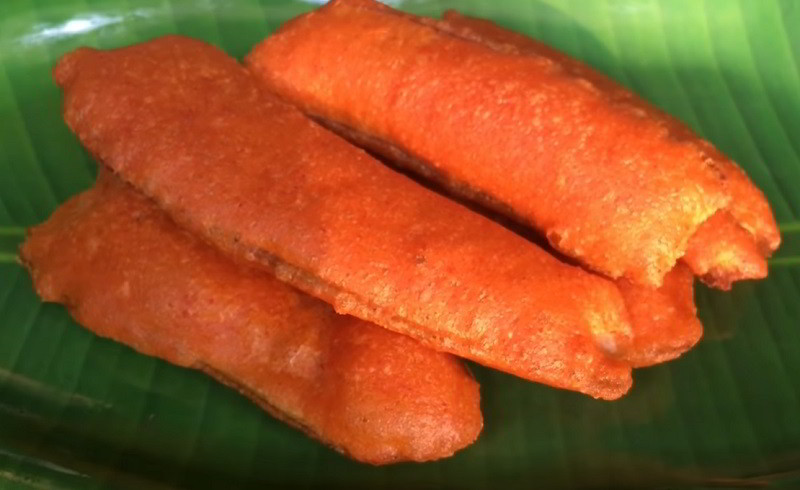
Bhaji is a delectable deep-fried snack made with a variety of vegetables, gram flour, and spices. It is a favorite street food in Tamil Nadu and is enjoyed by people of all ages. The key to a perfect bhaji lies in the selection and combination of vegetables used. Common choices include onions, potatoes, spinach, and cauliflower, although the options are endless. These vegetables are mixed with a batter made from gram flour, water, and a blend of aromatic spices such as turmeric, chili powder, and cumin. Once the batter-coated vegetables are deep-fried to a golden brown, the bhaji is ready to be served. It is often enjoyed with a tangy and spicy chutney or as an accompaniment to a main meal. The crispy outer layer gives way to a soft and flavorful center, creating a delightful contrast of textures.
Boli
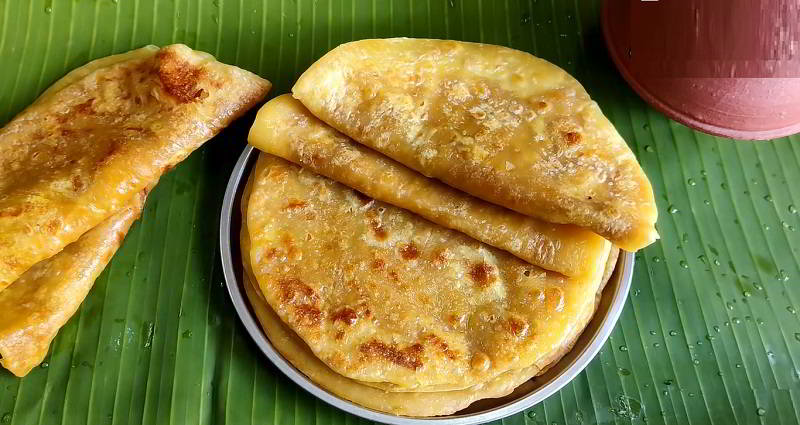
Boli is a sweet flatbread made with a filling of lentils, jaggery, and aromatic spices. The dish is prepared during festive occasions and celebrations, where families come together to enjoy its delectable taste. To make boli, a dough is prepared using wheat flour, ghee, and water. The filling, known as puran, is made by cooking lentils and jaggery together until they form a smooth mixture. This mixture is then flavored with cardamom, nutmeg, and saffron, giving it a rich and fragrant taste. The dough is rolled out, and a portion of the puran is placed in the center. The dough is then folded over to enclose the filling, and the bread is cooked on a griddle until it turns golden brown. The final result is a soft and sweet flatbread with a melt-in-your-mouth texture.
Rasam
-1711709551.jpg)
Rasam is a tangy and flavorful South Indian soup that is an integral part of Tamil cuisine. It is made with a unique blend of spices, tamarind, and tomatoes, giving it a distinct taste and aroma. Rasam is known for its soothing and digestive properties, making it a popular choice for a comfort food or as a starter to a meal. To prepare rasam, the key ingredients include tamarind pulp, tomatoes, garlic, cumin seeds, black pepper, curry leaves, and various spices like turmeric and asafoetida. These ingredients are combined with water and cooked together to create a thin and aromatic soup. Some variations of rasam may also include lentils for added texture and nutrition. Rasam is typically served hot and enjoyed with steamed rice or as a standalone soup.
Pongal
-1711709907.jpg)
Pongal is a popular and traditional dish in Tamil cuisine. It is a flavorful and wholesome dish made primarily with rice and lentils. Pongal is commonly prepared during the harvest festival of Tamil Nadu, known as Thai Pongal, and is considered a symbol of abundance and prosperity. The main ingredients of Pongal are rice and moong dal (split yellow lentils), which are cooked together until soft and mushy. The dish is then flavored with ghee (clarified butter), cumin seeds, black pepper, ginger, and curry leaves, which enhance its taste and aroma. Additionally, cashews and raisins are often added to provide a crunchy texture and a touch of sweetness. Pongal is usually served hot with sambar (a lentil-based vegetable stew) and coconut chutney. It can be enjoyed as a breakfast or lunch dish and is known for its simplicity and comfort. The creamy texture and earthy flavors of Pongal make it a satisfying and nourishing meal.
Uttapam
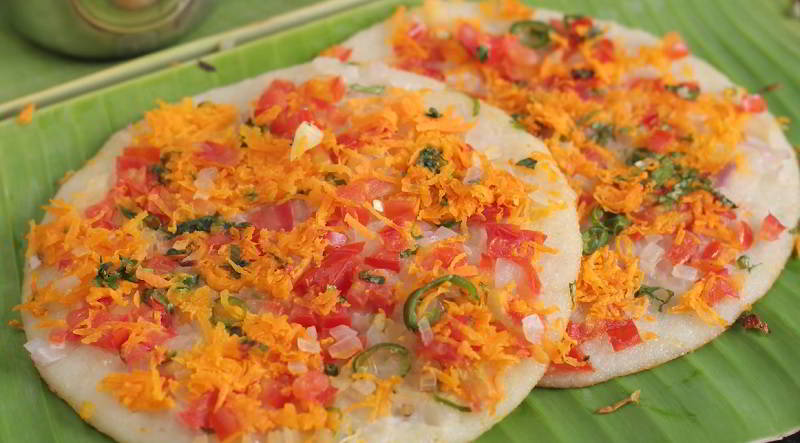
Uttapam is a type of thick pancake made from fermented rice and lentil batter. The batter is prepared by soaking rice and lentils for a few hours, and then grinding them into a smooth paste. This mixture is left to ferment overnight, resulting in a slightly tangy flavor. To make Uttapam, the fermented batter is spread on a hot griddle or tawa, similar to a pancake. It is then topped with various ingredients such as finely chopped onions, tomatoes, green chilies, and coriander leaves, which are pressed gently into the batter. The Uttapam is cooked until it turns golden brown and crispy on the outside, while remaining soft and fluffy on the inside. Uttapam is typically served with a variety of chutneys and sambar, which are flavorful accompaniments.
Dahi Vada
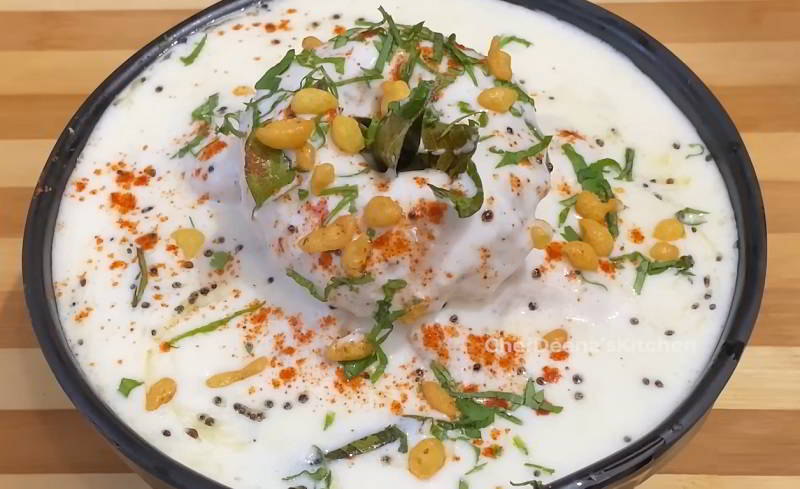
Dahi vada is a popular dish in Tamil cuisine that is loved for its unique combination of flavors and textures. It is a delicious snack made from lentil dumplings soaked in a yogurt-based sauce. To prepare dahi vada, lentils like urad dal or moong dal are soaked and ground into a smooth batter. This batter is then shaped into small dumplings and deep-fried until golden and crispy. Once fried, the vadas are soaked in water to make them soft and spongy. The vadas are then served chilled, topped with a generous amount of thick, creamy yogurt. The yogurt is usually flavored with a mixture of spices like roasted cumin, black salt, and chaat masala. To add a burst of freshness, the vadas are garnished with finely chopped coriander leaves and tangy tamarind chutney. Dahi vada is a perfect balance of flavors, with the tanginess of yogurt, the heat from spices, and the sweetness of chutney. It is a refreshing and cooling dish, making it a favorite during hot summer days.
Paddu
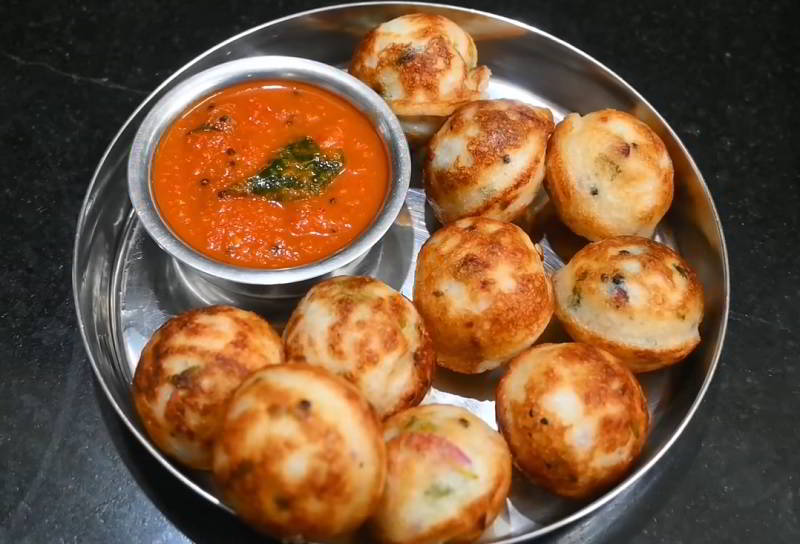
Paddu, also known as Appe, is a beloved snack or breakfast item enjoyed by people of all ages. Paddu is made by fermenting a batter of rice and urad dal overnight. This batter is then poured into a special Paddu pan, similar to a small round-shaped appe pan with multiple cavities. Before pouring the batter, the pan is greased with oil or ghee. The batter is cooked on low heat until the outer layer turns crispy and golden brown, while the inside remains soft and fluffy. Paddu can be made plain or with various fillings like grated coconut, onion, green chili, and coriander leaves. These ingredients enhance the flavor and add a delightful texture. Paddu is typically served hot with coconut chutney or sambar, a lentil-based vegetable stew. It can also be enjoyed with a dollop of ghee or yogurt. The combination of the crispy outer layer and the soft, flavorful filling makes Paddu a delicious and satisfying dish, perfect for a quick snack or a wholesome breakfast.
Adhirasam
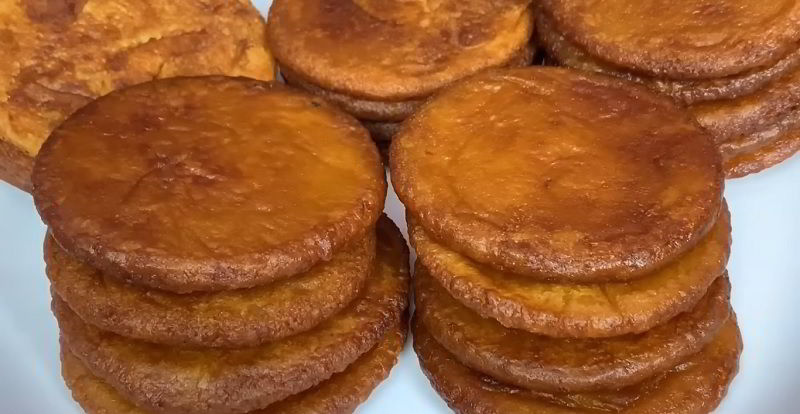
Adhirasam, a beloved traditional sweet, is prepared by blending rice flour, jaggery (unrefined cane sugar), and a blend of aromatic spices. The dough is then skillfully shaped into small round discs and deep-fried until they turn a perfect golden brown. The result is a crispy and syrupy delight that truly satisfies the senses. What makes Adhirasam truly special is its exceptional blend of flavors. The use of jaggery imparts a luscious, caramel-like sweetness, while the addition of spices such as cardamom and cloves fills the air with a heavenly aroma.
Chicken Chettinad

Chicken Chettinad, a culinary masterpiece originating from the Chettinad region in Tamil Nadu, South India, is renowned for its bold flavors and fragrant spices. It embodies the rich heritage of the region by incorporating a diverse blend of spices such as black pepper, fennel seeds, cinnamon, cloves, and star anise. To prepare Chicken Chettinad, chicken pieces are marinated in a potent mixture of red chillies, kalpasi, fennel seeds, black pepper, coriander seeds, ginger, garlic, and yogurt. The marinated chicken is then slow-cooked in a coconut and poppy seed sauce, resulting in a dish with a creamy, rich texture. The symphony of flavors created by the harmonious blend of spices is truly captivating and complex.
Pulihora
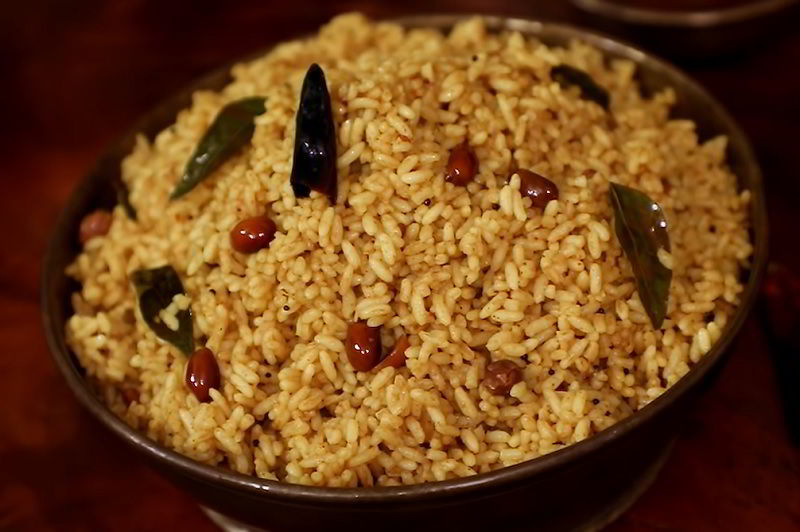
Pulihora, also known as tamarind rice, is a beloved dish in Tamil cuisine. The key ingredient in Pulihora is tamarind, which gives it its unique sour taste. Cooked rice is combined with a paste made from tamarind pulp, and then tempered with mustard seeds, curry leaves, dried red chilies, and various spices to enhance the flavors. Roasted peanuts or cashews are also added to add crunch and flavor. Some variations of Pulihora include grated coconut, sesame seeds, and turmeric for extra taste and color. Pulihora is loved for its well-balanced flavors - the tanginess from the tamarind, the nuttiness from the roasted peanuts, and the spiciness from the tempering spices. It is often enjoyed with yogurt or raita on the side, which provides a complementary and cooling element.
Watalappam
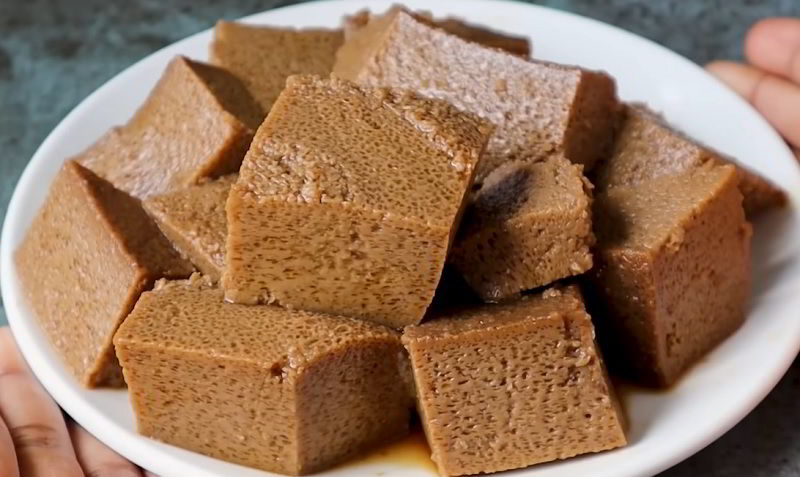
Watalappam is a traditional Tamil dessert that is popular in Sri Lanka, particularly among the Tamil community. It is a rich and creamy pudding made from a combination of jaggery, coconut milk, eggs, and a variety of aromatic spices. To prepare Watalappam, jaggery is melted and mixed with coconut milk in a saucepan. The mixture is then strained to remove any impurities. Eggs are beaten separately and added to the jaggery-coconut milk mixture along with a blend of spices, such as cardamom, cloves, and nutmeg. The ingredients are thoroughly mixed to create a smooth and velvety consistency. The mixture is then poured into small individual bowls or a larger dish and steamed until set. The steaming process allows the flavors to meld together and creates a soft and custard-like texture. Once cooled, Watalappam is garnished with toasted cashews or almonds, adding a delightful crunch to the dessert.
Avial
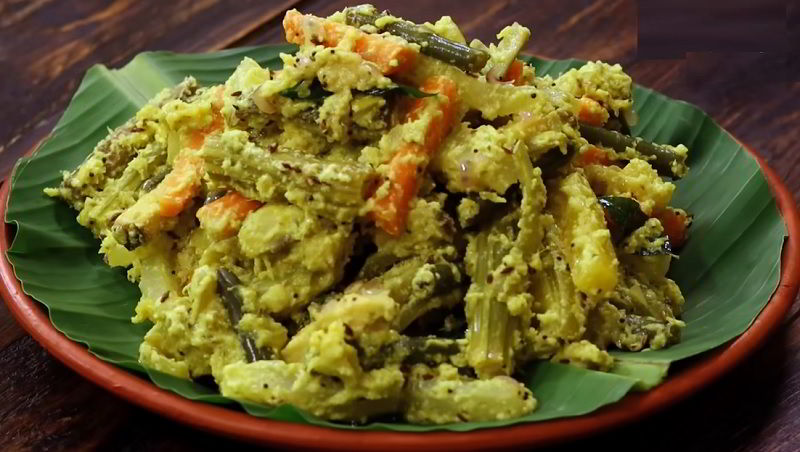
Avial is a delicious and nutritious medley of vegetables cooked in a creamy coconut and yogurt sauce. The dish is a perfect blend of flavors and textures, making it a staple in Tamil cuisine. Avial typically consists of a variety of vegetables like carrots, beans, drumsticks, potatoes, and ash gourd, all cut into long pieces. These vegetables are then cooked with a mixture of green chilies, turmeric, and salt. The highlight of this dish is the creamy sauce made from grated coconut and yogurt, which adds a rich and tangy flavor. The vegetables are gently simmered in this sauce until tender, retaining their natural colors and flavors. The final touch is a tempering of mustard seeds, curry leaves, and coconut oil, which adds a delightful aroma and enhances the taste of the dish. Avial is often served as a side dish with steamed rice or alongside other Tamil dishes like sambar and rasam.
Munthiri Kothu

Munthiri kothu is a delicious snack made by frying green gram and rice powder balls. To make this treat, green gram is roasted in a kadai with a touch of ghee, then crushed into a fine powder. Sesame seeds and coconut flakes are also roasted and ground separately. These powders are mixed with cardamom and jaggery syrup to make a sweet mixture, which is then shaped into small balls. A batter is created by combining maida flour, rice powder, turmeric, and salt with water, ensuring a smooth consistency. The golf-ball-shaped fritters are deep-fried in a heated kadai with ghee until they are perfectly cooked, resulting in a nutritious and delightful munthiri kothu.
Thooththukkudi Macaroon
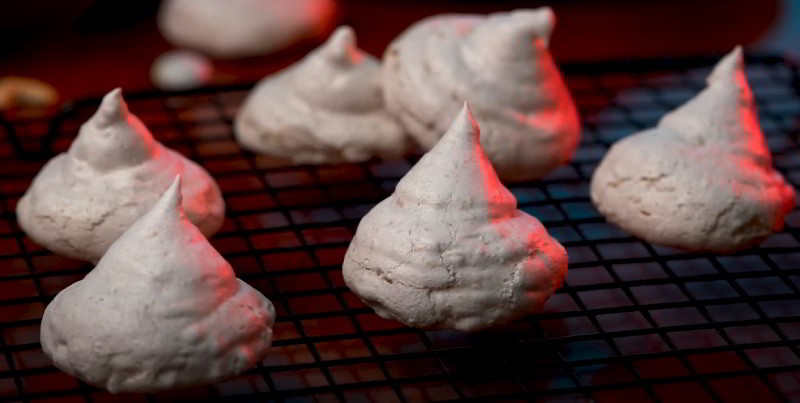
Tamil cuisine is known for its rich and diverse flavors, and one of the most beloved dishes is the Thoothukkudi macaroon. Originating from the coastal city of Thoothukkudi in Tamil Nadu, this delectable sweet treat is a true delight for the senses. Thooththukkudi macaroons, which are small, round cookies, are primarily made with powdered cashew, sugar, and egg whites. The inclusion of cashew gives them a rich and nutty taste, while the sugar adds a delightful sweetness. The egg whites are whipped until they form stiff peaks, resulting in a light and airy texture. These macaroons are typically baked until they acquire a crispy outer layer and a slightly chewy center.
Kuzhambu
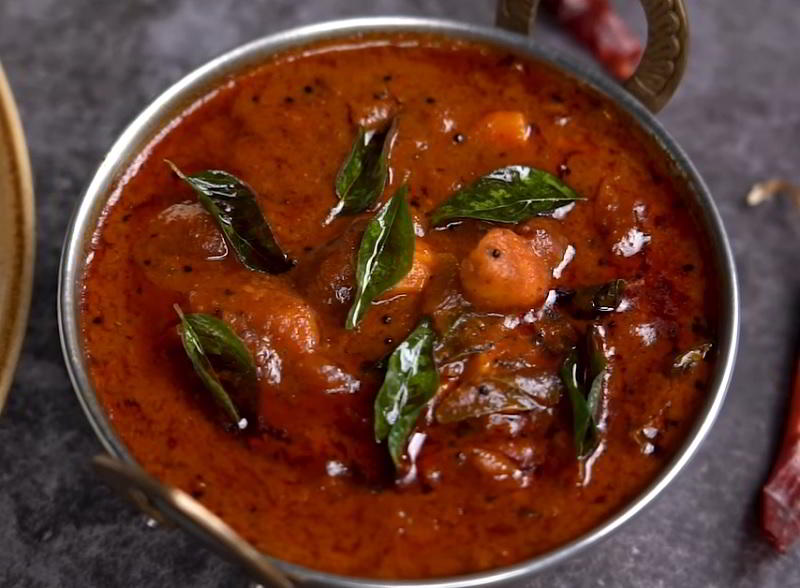
Kuzambu is a delicious dish known for its tangy broth made from tamarind and a blend of spices like coriander seeds, fenugreek, and toor dal. This versatile dish can include various ingredients like fresh or dried vegetables, pureed coconut, or lentil balls. The consistency of Kuzambu can range from a thin, soupy broth to a thicker, gravy-like texture, catering to different preferences. With its combination of sour, spicy, and savory flavors, Kuzambu is a popular choice in Tamil cuisine. Its adaptability in terms of ingredients and consistency allows for a wide range of delightful and unique Kuzambu variations.
Poriyal
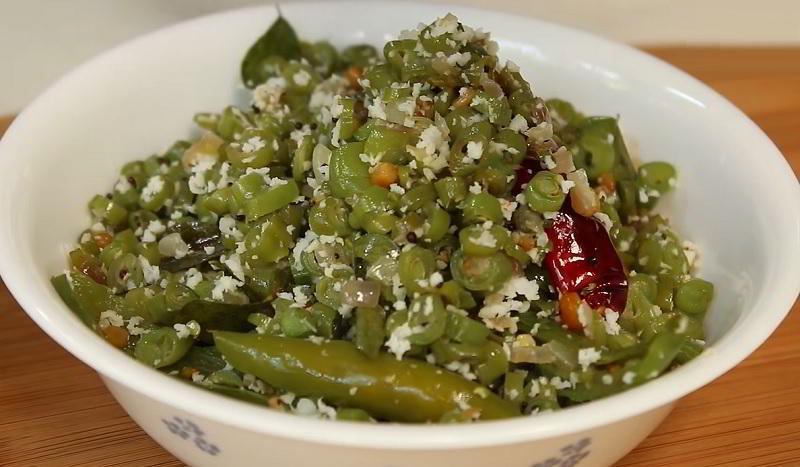
Poriyal, a traditional vegetable stir-fry, is both simple and bursting with flavor. To create this dish, a variety of vegetables such as beans, carrots, cabbage, or spinach are finely chopped and sautéed with a blend of mustard seeds, urad dal, curry leaves, and dried red chilies. The vegetables are cooked until tender, maintaining their vibrant colors and satisfying crunch. The secret to a delightful Poriyal lies in the aromatic spices and seasonings utilized. Alongside the mustard seeds and curry leaves, grated coconut is added to enhance the taste and offer a subtle sweetness to the dish. A splash of lemon juice provides a tangy twist, perfectly balancing the flavors.
Bonda
-1711716130.jpg)
Bonda is a deep-fried dumpling made with a crispy outer layer and a soft and flavorful filling. The main ingredients used to prepare bonda are gram flour (besan), rice flour, and a variety of spices. To make bonda, a batter is prepared by mixing gram flour, rice flour, salt, turmeric powder, and water. This batter is then used to coat the filling, which can be made with mashed potatoes, onions, green chilies, ginger, curry leaves, and various spices such as cumin and mustard seeds. The filling is then shaped into small balls and dipped into the batter before being deep-fried until golden brown and crispy. Bonda is typically served hot with coconut chutney or tomato ketchup. I
Parotta
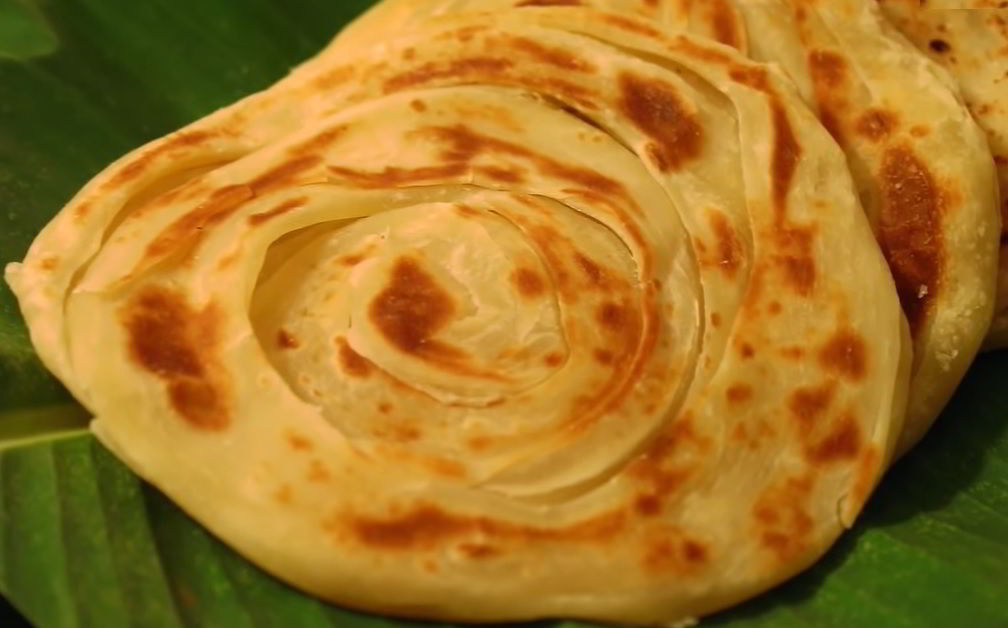
Parotta, a flaky and layered flatbread, is made from all-purpose flour, oil or ghee, and water. The dough is kneaded, stretched, and folded multiple times to create its unique layers. Once shaped into round discs, the parottas are cooked on a griddle until they become golden brown and crispy. They are typically savored with a variety of side dishes, such as spicy curries like chicken or mutton curry, vegetable kurma, or egg curry. Additionally, they can be enjoyed with an array of chutneys and pickles. The delightful texture of parotta, with its crisp exterior and soft, flaky layers, makes it a pleasure to eat. It is commonly torn into bite-sized pieces and eaten by hand, allowing the flavors of the accompanying dishes to meld together.
Koottu
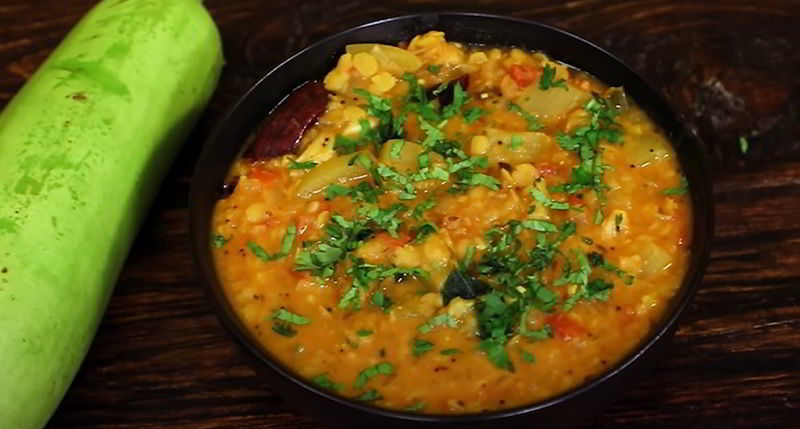
Koottu is a rich and hearty stew made by combining a variety of vegetables, lentils, and spices. The term "Koottu" means "mixture" in Tamil, accurately reflecting the blend of flavors and textures in this dish. To prepare Koottu, vegetables such as pumpkin, ash gourd, brinjal, and snake gourd are cooked alongside lentils like split yellow moong dal or chana dal. These ingredients are then mixed together with a freshly ground paste of coconut and spices, adding a delightful fragrance and aroma. The dish is further enhanced by tempering mustard seeds, curry leaves, and dried red chilies. The addition of coconut lends a creamy texture and a hint of sweetness to complete the dish.
Satti sorru
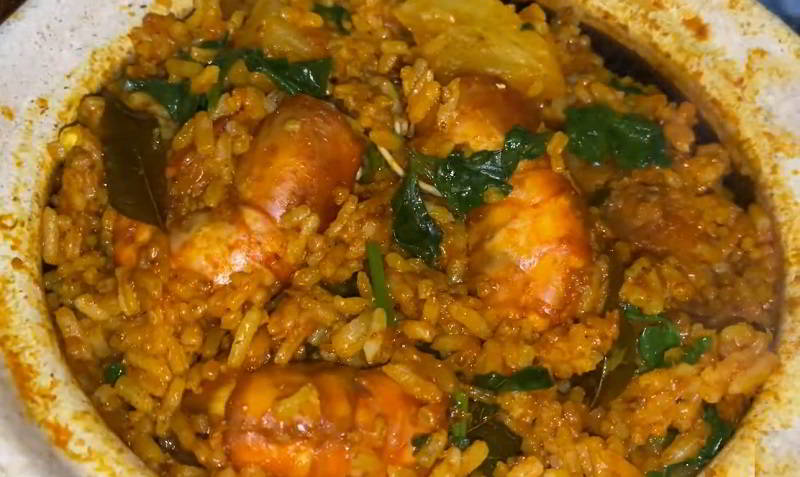
Satti soru, translating to 'clay pot rice' in Tamil, is a prevalent dish in South Indian households. It involves mixing leftover curry gravy with rice, using it to clean the pot or wok it was cooked in. Typically, rice and various ingredients are cooked in a clay pot over a low flame. Known as man panai or man satti in Tamil, these pots retain moisture and impart a distinct aroma to the rice. Ingredients like spices, vegetables, meat, and seafood are commonly used, with cumin, coriander, turmeric, cinnamon, cardamom, and cloves among the spices favored in this flavorful dish.
Koozh
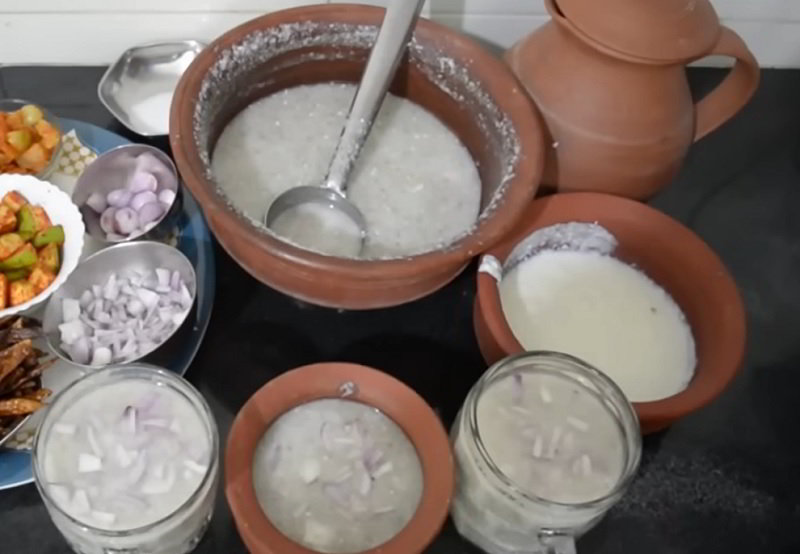
Koozh, a traditional Tamil porridge made from millet, is a staple in villages across Tamil Nadu. Prepared using Kezhvaragu or Cumbu flour and broken rice in a clay pot, it's a vegetarian dish, though non-vegetarian versions with fish, crab, or chicken exist. Fermentation lends it a tangy flavor. After thickening, it's diluted with water, salt, and optionally buttermilk, then served with accompaniments like green chilies, raw onion, and pickles, or alongside Karuvattu Kozhambu, a dry fish gravy. Koozh is cherished for its simplicity, nutritional value, and its ability to satisfy hunger, particularly in rural communities.
Manapparai Murukku
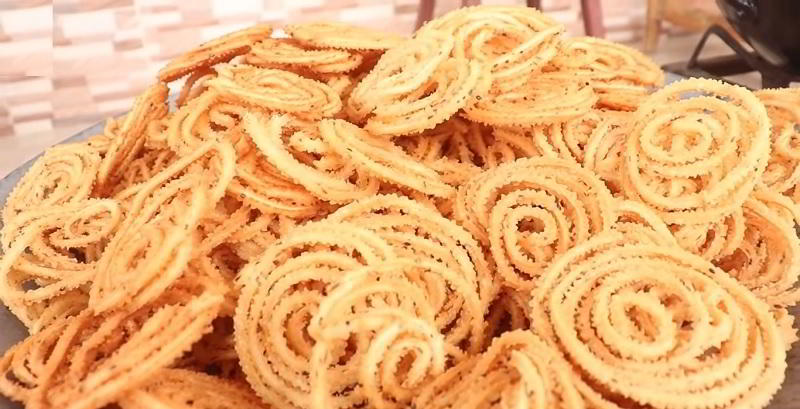
Manapparai murukku is a crispy and savory snack that gets its name from Manapparai, a small town in Tamil Nadu known for its traditional and authentic murukku preparation. To prepare Manapparai murukku, ingredients like rice flour, cumin seeds, sesame seeds, asafetida, carom seeds, salt, water, and oil are required. These ingredients are combined with the flour and gradually mixed with water to form a thick batter. The batter is then placed into a murukku maker, where it's pressed and rotated to create distinctive coils. After resting briefly, the coils are fried in oil until crispy, then set aside. This process may be repeated, and for added richness, butter or ghee can be incorporated into the batter to enhance flavor and texture.
Thakkadi
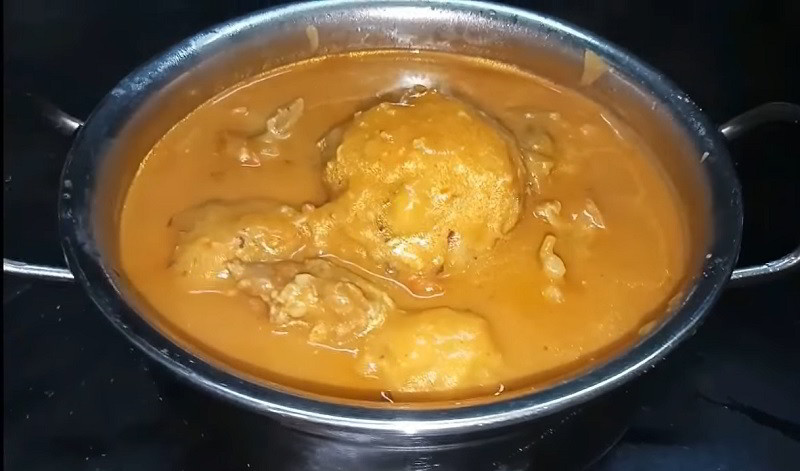
Thakkadi is a dish consisting of steamed rice flour balls served with mutton salna. These rice flour balls are crafted with a mixture of rice flour, thinly sliced shallots, chopped curry leaves, and shredded coconut. They're then either simmered in a flavorful meat stew, typically made with mutton, beef, or chicken, or dipped in a spiced curry sauce. This delicacy offers a delightful blend of textures and flavors, with the softness of the rice flour balls complementing the richness and spiciness of the accompanying meat stew or curry.
Lavariya
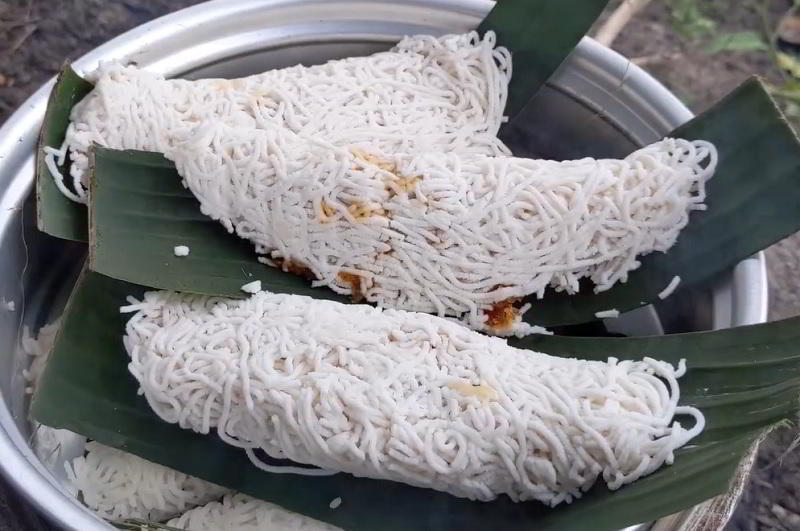
Lavariya, a traditional Tamil sweet treat, is a delightful fusion of caramelized coconut nestled within an Idiyappam casing. To prepare this delicacy, rice flour is blended with hot water, oil, and seasoned with salt, forming a smooth dough. Using an Idiyappam press or sieve, thin noodles are extruded onto banana leaves. The filling, called Pol Pani, comprises grated coconut, moong dal, and jaggery syrup, shaped into half moons and placed atop the rice flour noodles. Finally, the bundles are encased in banana leaves and steamed until tender. Lavariya offers a harmonious balance of sweetness and texture, a beloved dessert in Tamil cuisine.
Molagoottal
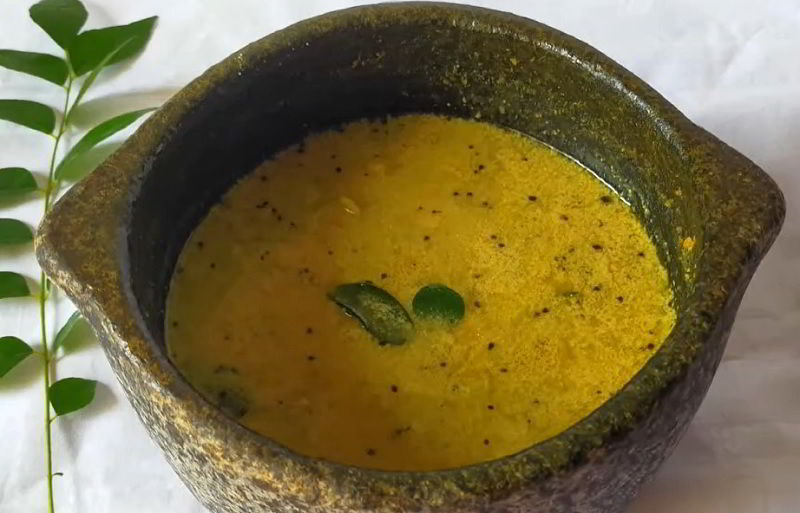
Molagoottal is a traditional Tamil dish that originates from the southern region of India. This delectable dish is a medley of vegetables cooked in a flavorful mix of coconut, spices, and lentils. To prepare molagoottal, a variety of vegetables such as pumpkin, snake gourd, drumstick, and beans are typically used. These vegetables are first cooked with a combination of lentils and turmeric powder until soft and tender. Meanwhile, a paste is prepared by grinding fresh coconut, cumin seeds, black peppercorns, and green chilies. This paste is then added to the cooked vegetables, along with a tempering of mustard seeds, curry leaves, and dried red chilies, to enhance the flavors. The result is a rich and aromatic dish with a creamy texture, thanks to the coconut. Molagoottal is usually served with steamed rice or roti, making it a wholesome and satisfying meal.
Nombu Kanji
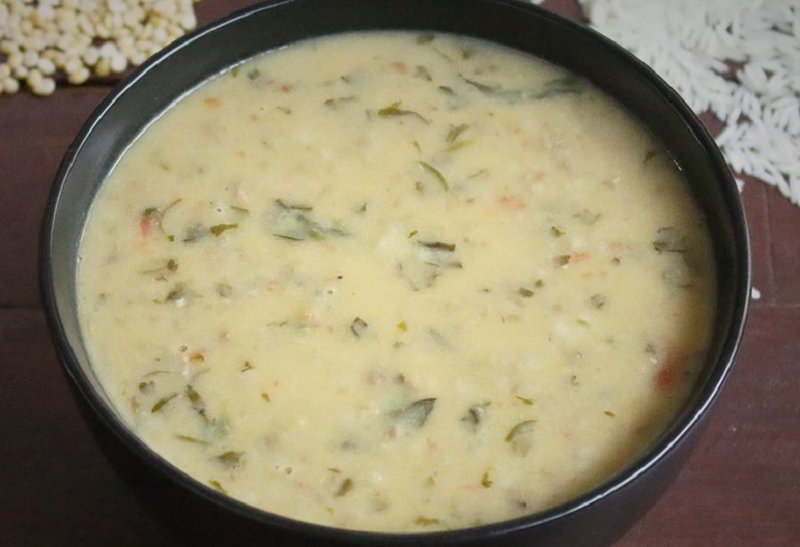
Nombu kanji, a cherished dish during Ramadan fasting in Tamil Nadu, is a hearty porridge infused with rich flavors. Prepared with rice, moong dal, and a variety of vegetables, it offers a nutritious and filling meal to break the day's fast. Fragrant spices such as cumin, cinnamon, and cloves are added for depth of flavor, while ginger and garlic lend a subtle warmth. Slow-cooked to perfection, Nombu Kanji boasts a creamy texture and aromatic aroma, inviting anticipation for the evening meal. This traditional dish not only nourishes the body but also holds cultural significance, fostering a sense of community and shared tradition.
Paruppusilli
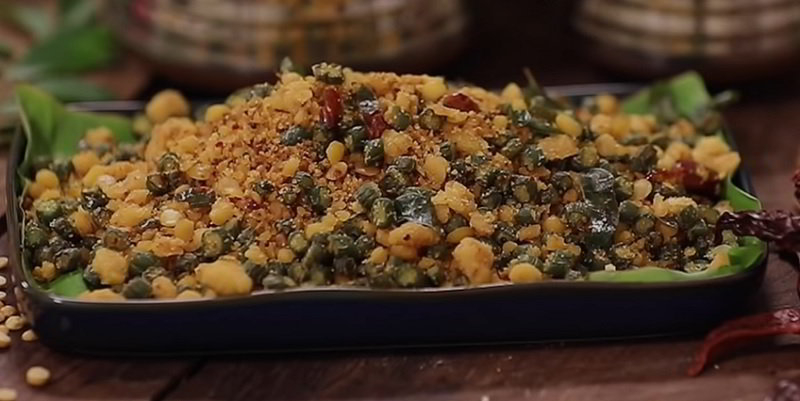
Paruppusilli is delectable dish made primarily from lentils and is known for its unique blend of flavors and textures. To prepare paruppusilli, a mixture of lentils such as toor dal or chana dal is soaked and ground into a coarse paste. This paste is then combined with a medley of finely chopped vegetables like cabbage, beans, carrots, and onions. The addition of fresh curry leaves, ginger, and green chilies adds a subtle yet vibrant taste to the dish. Once the ingredients are thoroughly mixed, small portions of the lentil and vegetable mixture are shaped into small balls or patties and fried until golden brown. The crisp exterior contrasts beautifully with the soft and flavorful interior. Paruppusilli can be enjoyed as a snack or as a side dish with rice and sambar or rasam.
Chippi Appam
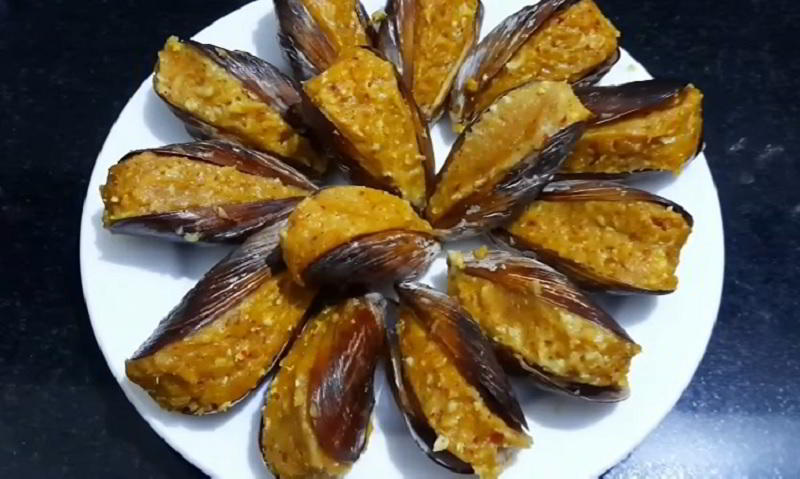
Chippi appam is mussel stuffed rice dumpling. To prepare this, roasted mussels are stuffed in rice dumplings, which are wrapped in banana leaves and then steamed. To prepare rice dumplings, rice dough is seasoned with grated coconut, salt, ground fennel, turmeric powder and garam masala.
Thuvaiyal
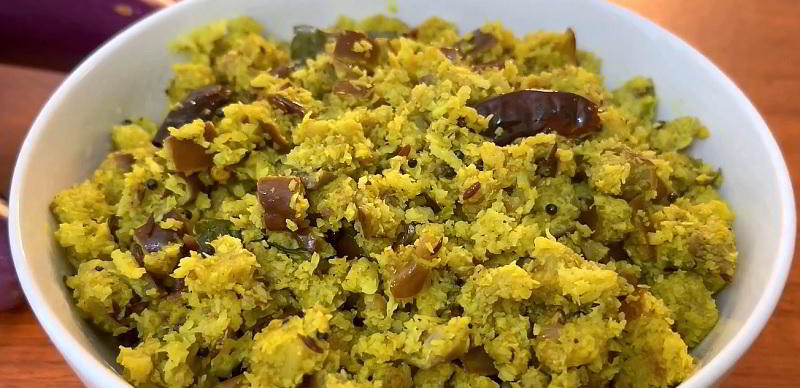
Thuvaiyal is a flavorful Tamil condiment or side dish renowned for its versatility and bold flavors. Made by grinding together a variety of ingredients such as coconut, lentils, spices, and fresh herbs, it offers a burst of taste and aroma. Thuvaiyal can be tailored to suit individual preferences, with variations including coconut thuvaiyal, tomato thuvaiyal, or mint thuvaiyal, among others.
Puri
-1711950654.jpg)
Puri is a popular dish in Tamil cuisine, known for its versatility and mouthwatering flavors. It is a deep-fried bread made from whole wheat flour, also known as atta. The dough is prepared by combining flour, salt, and water, and then rolled into small, round discs. These discs are then deep-fried in hot oil until they puff up and turn golden brown. Puris are light and fluffy, with a crisp exterior and a soft, chewy interior. They are often enjoyed as a breakfast or brunch item and can be served with a variety of accompaniments.
Appalam
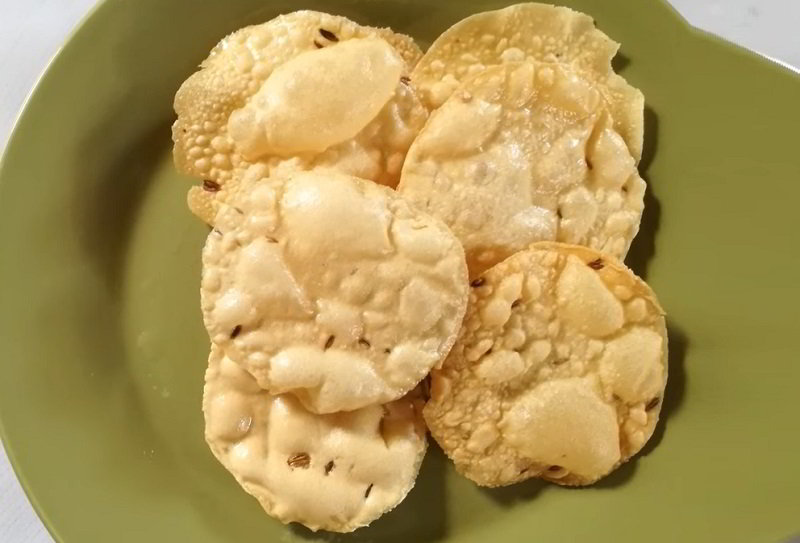
Appalam is a popular dish in Tamil cuisine. It is a thin, crispy flatbread made from a mixture of lentil flour, spices, and salt. The dough is rolled out into thin discs and then dried in the sun or deep-fried until it becomes light and crispy. Appalams are typically served as an accompaniment to meals or as a snack on their own. They are often enjoyed with rice, curries, chutneys, or as a crunchy addition to various Indian dishes. The flavors of appalam can vary depending on the region and the spices used in the dough. Common spices include cumin, black pepper, chili powder, and asafoetida, which give the papadams a unique and savory taste.
Chapati
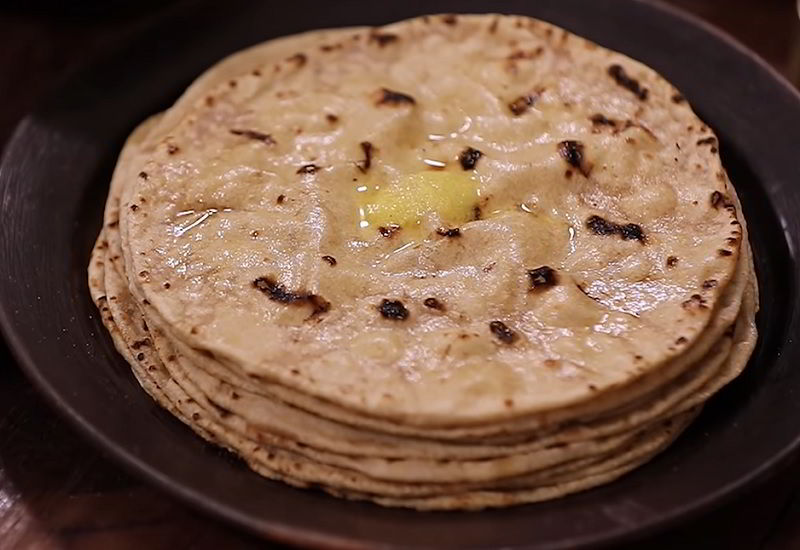
Chapati is a simple and healthy flatbread made from wheat flour. To prepare chapati, the flour is mixed with water and sometimes a pinch of salt to form a soft dough. The dough is then rolled into thin, round discs and cooked on a hot griddle. Chapati is usually served hot and can be enjoyed with a variety of side dishes. It pairs well with both vegetarian and non-vegetarian curries, dals (lentil soups), and chutneys.






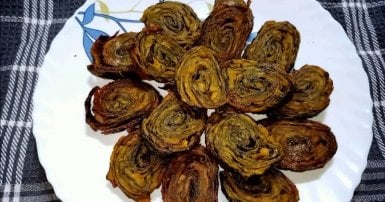
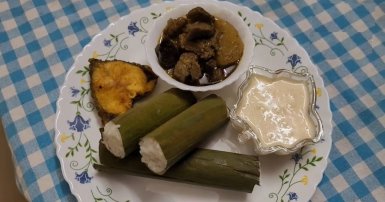
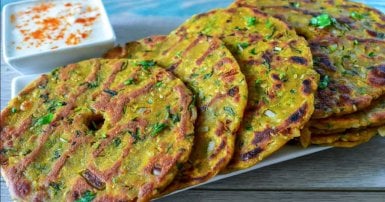
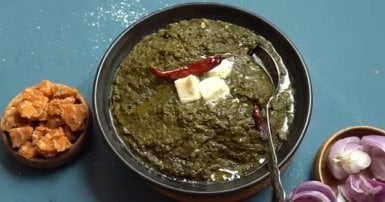
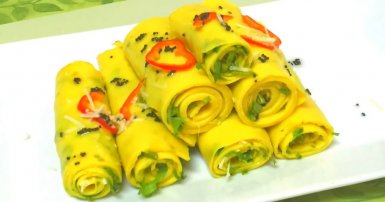
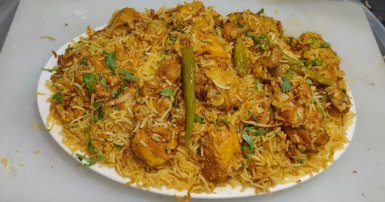

-1709813013.jpg)


